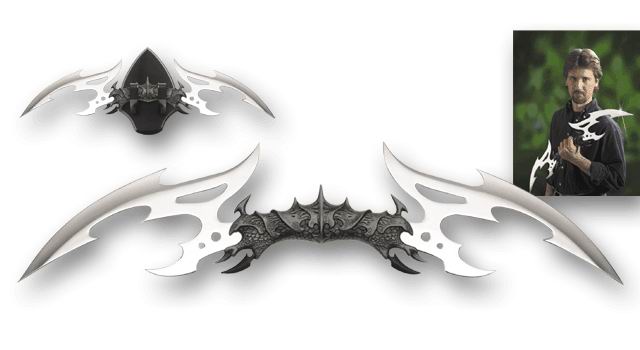|
|
Beautiful Swords And Knives
|
Three types of attacks can be performed with the blade: striking, cutting, and thrusting. The blade can be double-edged or single-edged, the latter often having a secondary "false edge" near the tip.
The blade may have grooves known as fullers for lightening the blade while allowing it to retain its strength and stiffness, similar to the effect produced by a steel I-beam used in construction. The blade may taper more or less sharply towards a point, used for thrusting. The part of the blade between the Center of Percussion (CoP) and the point is called the foible (weak) of the blade, and that between the Center of Balance (CoB) and the hilt is the forte (strong). The section in between the CoP and the CoB is the middle. The ricasso or shoulder identifies a short section of blade immediately forward of the guard that is left completely unsharpened, and can be gripped with a finger to increase tip control. Many swords have no ricasso. On some large weapons, such as the German Zweihänder, a metal cover surrounded the ricasso, and a swordsman might grip it in one hand to wield the weapon more easily in close-quarter combat.
The ricasso normally bears the maker's mark. On Japanese blades this mark appears on the tang (part of the blade that extends into the hilt) under the grip.
• In the case of a rat-tail tang, the maker welds a thin rod to the end of the blade at the crossguard; this rod goes through the grip (in 20th century and later construction). This occurs most commonly in decorative replicas, or cheap sword replicas. Traditional sword-making does not use this construction method, which does not serve for traditional sword usage as the sword can easily break at the welding point.
|
|









